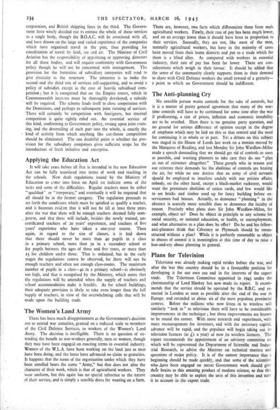Applying the Education Act
It will take years before all alai is intended in the new Education Act can be fully translated into terms of work and teaching in the schools. New draft regulations issued' by the Ministry of Education to come into force on April 1st indicate some of the tasks and some of the difficulties. Regular .teachers must be either "qualified or "temporary," and eventually it will be required that all should be in the former category. The regulation proceeds to set forth the conditions which must he satisfied to qualify a teacher, and it becomes evident that it will not be till at least three years after the war that there will be enough teachers deemed fully corn- , petent, and that these will include, besides the newly trained, un- certificated teachers of zo years' experience, and teachers of five years' experience who have taken a one-year course. Then again, in regard to the size of classes, it is laid down that there should never be more than 40 pupils in a class in a primary school, more than 30 in a secondary school or for pupils between the ages of three and five years, or more than 15 for children undu three. That is ordained, but in the early stages the regulations cannot be observed, for there will not be ,enough teachers and often not enough class-rooms. The maximum number of pupils in a class-4o in a primary school—is obviously -too high, and that is recognised by the Ministry, which states that 'the regulations will be amended when the supply of teachers and school accommodation make it feasible. As for school .buildings, their adequate provision is likely to take even longer than the full 'Supply of teachers, in view of the overwhelming calls that will be made upon the building trade.


























 Previous page
Previous page